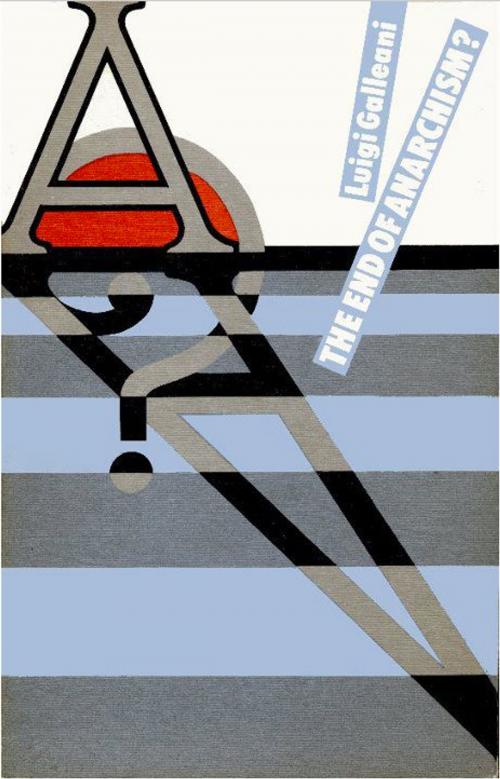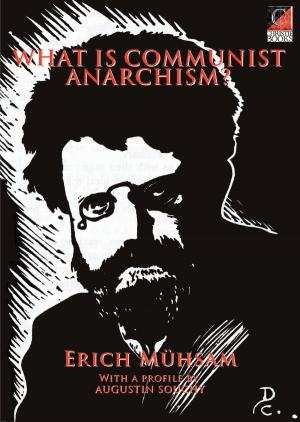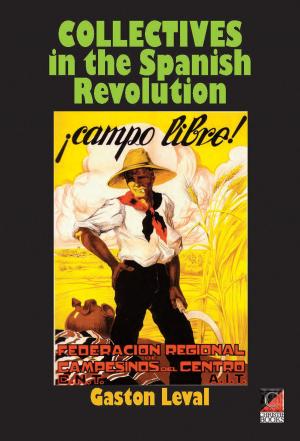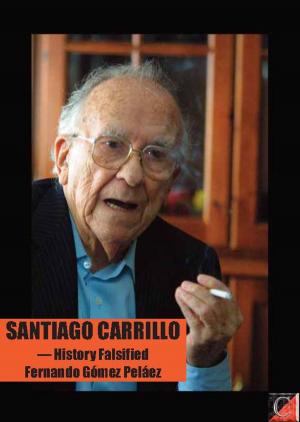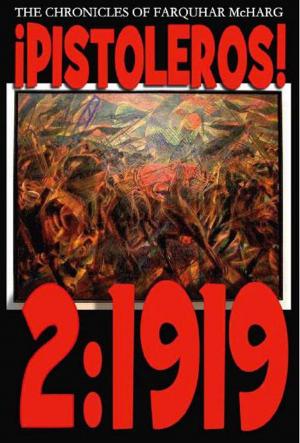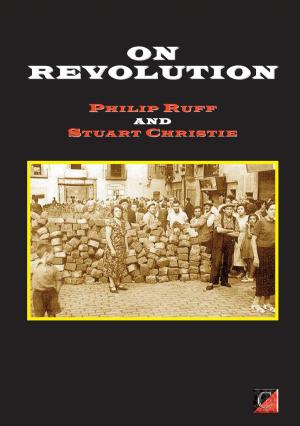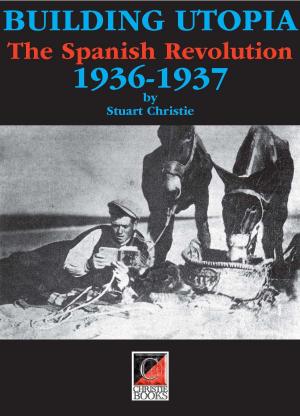| Author: | Luigi Galleani | ISBN: | 1230000274073 |
| Publisher: | ChristieBooks | Publication: | October 14, 2014 |
| Imprint: | ChristieBooks | Language: | English |
| Author: | Luigi Galleani |
| ISBN: | 1230000274073 |
| Publisher: | ChristieBooks |
| Publication: | October 14, 2014 |
| Imprint: | ChristieBooks |
| Language: | English |
Here, translated for the first time into English, is a new edition of 'The End of Anarchism?' by Luigi Galleani, an anarchist militant in both Italy and North America, who is best known for his activities as the editor of the US-based Italian language journal, 'Cronaca Sovversiva', published between 1903-1918. From this paper sprang one of the largest and most enduring elements of the anarchist movement in North America. 'The End of Anarchism?', first published as a volume in 1925, is an expanded version of a series of articles that appeared under the same title some twenty years earlier — in 'Cronaca Sovversiva' — as a reply to an assertion by a former militant, Saverio Merlino, that the anarchist movement was no longer vital or significant. Initially conceived as a rebuttal, it developed into an eloquent exposition of Galleani's own concept of anarchist-communism, his most organic theoretical work — “a lucid statement of the ever present problems of anarchism in relation to the would-be revolutionary movements" in the words of Errico Malatesta.
This edition contains an introduction specially written for Cienfuegos Press by 'Max Sartin' (Raffaele Schiavina, 1894-1987), a close collaborator of Galleani's and the editor of L'Adunata dei Refrattari, the last major Italian anarchist journal published in the USA (1922-1971).
The career of Luigi Galleani involves a paradox. During the first two decades of the twentieth century, he was the leading Italian anarchist in the United States, one of the greatest anarchist orators of his time, in a class with Emma Goldman and Johann Most, editor of the foremost Italian-American anarchist periodical, La Cronaca Sovversiva (The Subversive Chronicle), which ran for fifteen years before its supression by the American government, and inspirer of a movement that included Sacco and Vanzetti among its adherents.
Yet Galleani has fallen into oblivion. He is virtually unknown in the United States, outside of a small circle of scholars and of personal associates and disciples, whose ranks are rapidly dwindling. No biography in English has been devoted to him, nor is he mentioned in the general histories of anarchism by George Woodcock and James Joll or in the comprehensive history of American anarchism by William Reichert. His writings, moreover, had remained untranslated until the appearance of the work under review, which, distilling the essence of his radical beliefs, his credo of revolutionary anarchism, fills a conspicuous gap in the literature of anarchism available to English readers and restores a major figure in the movement to his proper historical place.
Galleani was born on August 12, 1861, in the Piedmont town of Vercelli, not far from the city of Turin. The son of middle-class parents, he was drawn to anarchism in his late teens and, studying law at the University of Turin, became an outspoken militant whose hatred of capitalism and government would burn with undiminished intensity for the rest of his life. Galleani, however, refused to practice law, which he had come to regard with contempt, transferring his talents and energies to radical propaganda. Under threat of prosecution, he took refuge in France, from which he was expelled for taking part in a May Day demonstration. Moving to Switzerland, he visited the exiled French anarchist and geographer Elisée Reclus, whom he assisted in the preparation of his Nouvelle Géographie universelle, compiling statistics on Central America. He also assisted students at the University of Geneva in arranging a celebration in honor of the Haymarket Martyrs, who had been hanged in Chicago in 1887, for which he was expelled as a dangerous agitator. Returning to Italy, Galleani continued his agitation, which got him into trouble with the police. Arrested on charges of conspiracy, he spent more than five years in prison and exile before escaping from the island of Pantelleria, off the coast of Sicily, in 1900.
Here, translated for the first time into English, is a new edition of 'The End of Anarchism?' by Luigi Galleani, an anarchist militant in both Italy and North America, who is best known for his activities as the editor of the US-based Italian language journal, 'Cronaca Sovversiva', published between 1903-1918. From this paper sprang one of the largest and most enduring elements of the anarchist movement in North America. 'The End of Anarchism?', first published as a volume in 1925, is an expanded version of a series of articles that appeared under the same title some twenty years earlier — in 'Cronaca Sovversiva' — as a reply to an assertion by a former militant, Saverio Merlino, that the anarchist movement was no longer vital or significant. Initially conceived as a rebuttal, it developed into an eloquent exposition of Galleani's own concept of anarchist-communism, his most organic theoretical work — “a lucid statement of the ever present problems of anarchism in relation to the would-be revolutionary movements" in the words of Errico Malatesta.
This edition contains an introduction specially written for Cienfuegos Press by 'Max Sartin' (Raffaele Schiavina, 1894-1987), a close collaborator of Galleani's and the editor of L'Adunata dei Refrattari, the last major Italian anarchist journal published in the USA (1922-1971).
The career of Luigi Galleani involves a paradox. During the first two decades of the twentieth century, he was the leading Italian anarchist in the United States, one of the greatest anarchist orators of his time, in a class with Emma Goldman and Johann Most, editor of the foremost Italian-American anarchist periodical, La Cronaca Sovversiva (The Subversive Chronicle), which ran for fifteen years before its supression by the American government, and inspirer of a movement that included Sacco and Vanzetti among its adherents.
Yet Galleani has fallen into oblivion. He is virtually unknown in the United States, outside of a small circle of scholars and of personal associates and disciples, whose ranks are rapidly dwindling. No biography in English has been devoted to him, nor is he mentioned in the general histories of anarchism by George Woodcock and James Joll or in the comprehensive history of American anarchism by William Reichert. His writings, moreover, had remained untranslated until the appearance of the work under review, which, distilling the essence of his radical beliefs, his credo of revolutionary anarchism, fills a conspicuous gap in the literature of anarchism available to English readers and restores a major figure in the movement to his proper historical place.
Galleani was born on August 12, 1861, in the Piedmont town of Vercelli, not far from the city of Turin. The son of middle-class parents, he was drawn to anarchism in his late teens and, studying law at the University of Turin, became an outspoken militant whose hatred of capitalism and government would burn with undiminished intensity for the rest of his life. Galleani, however, refused to practice law, which he had come to regard with contempt, transferring his talents and energies to radical propaganda. Under threat of prosecution, he took refuge in France, from which he was expelled for taking part in a May Day demonstration. Moving to Switzerland, he visited the exiled French anarchist and geographer Elisée Reclus, whom he assisted in the preparation of his Nouvelle Géographie universelle, compiling statistics on Central America. He also assisted students at the University of Geneva in arranging a celebration in honor of the Haymarket Martyrs, who had been hanged in Chicago in 1887, for which he was expelled as a dangerous agitator. Returning to Italy, Galleani continued his agitation, which got him into trouble with the police. Arrested on charges of conspiracy, he spent more than five years in prison and exile before escaping from the island of Pantelleria, off the coast of Sicily, in 1900.
